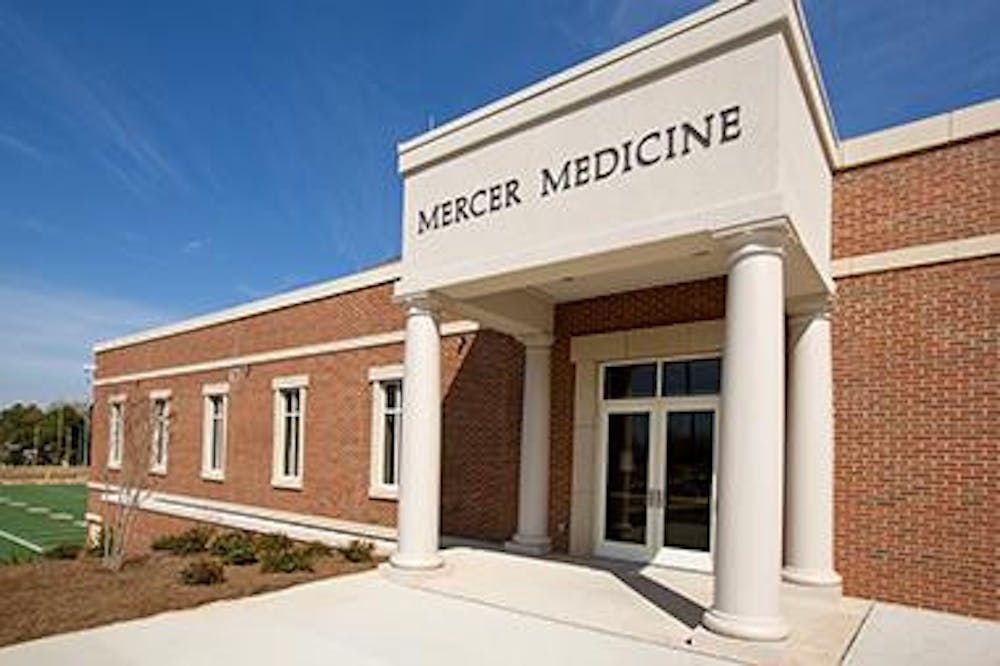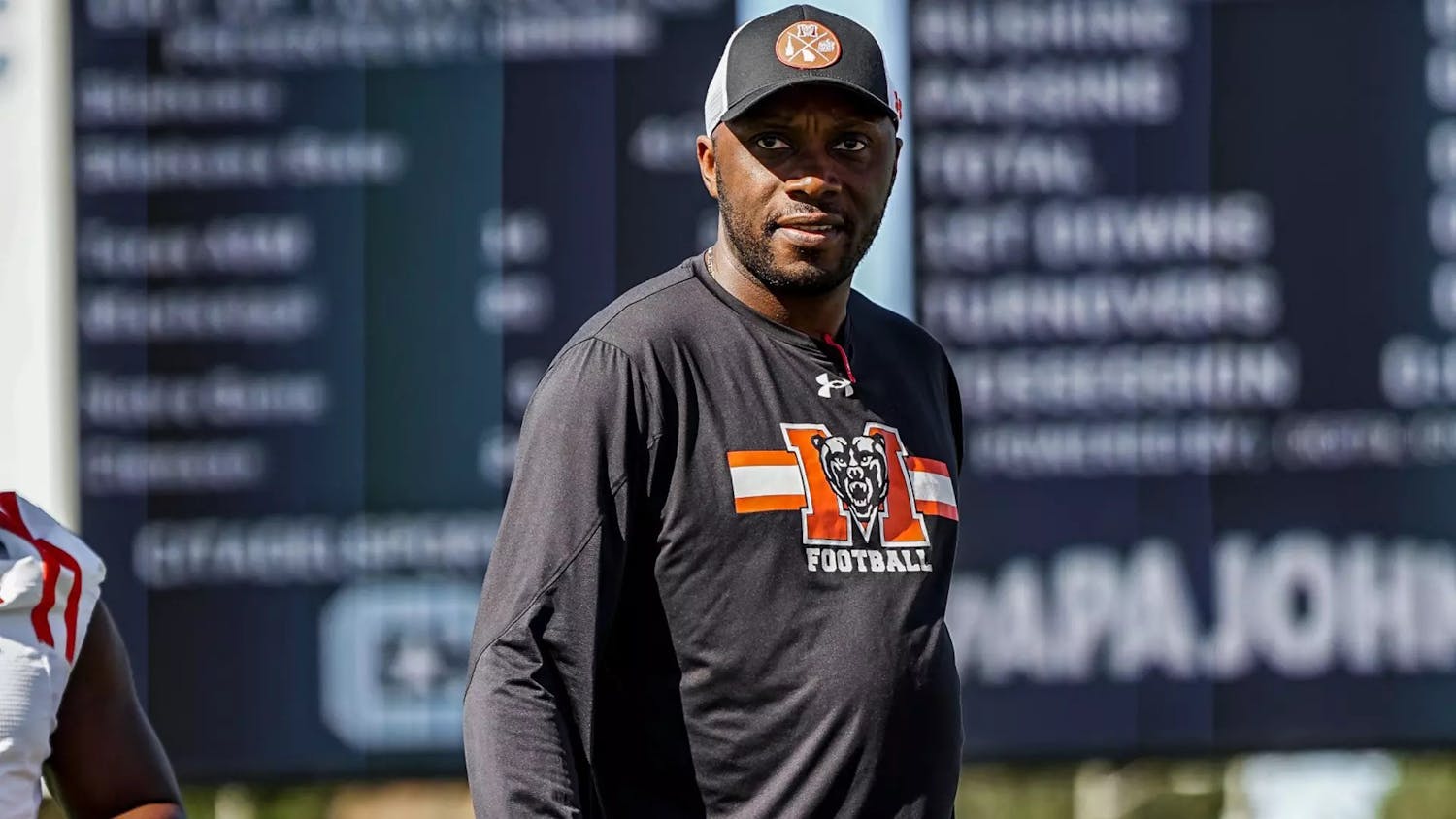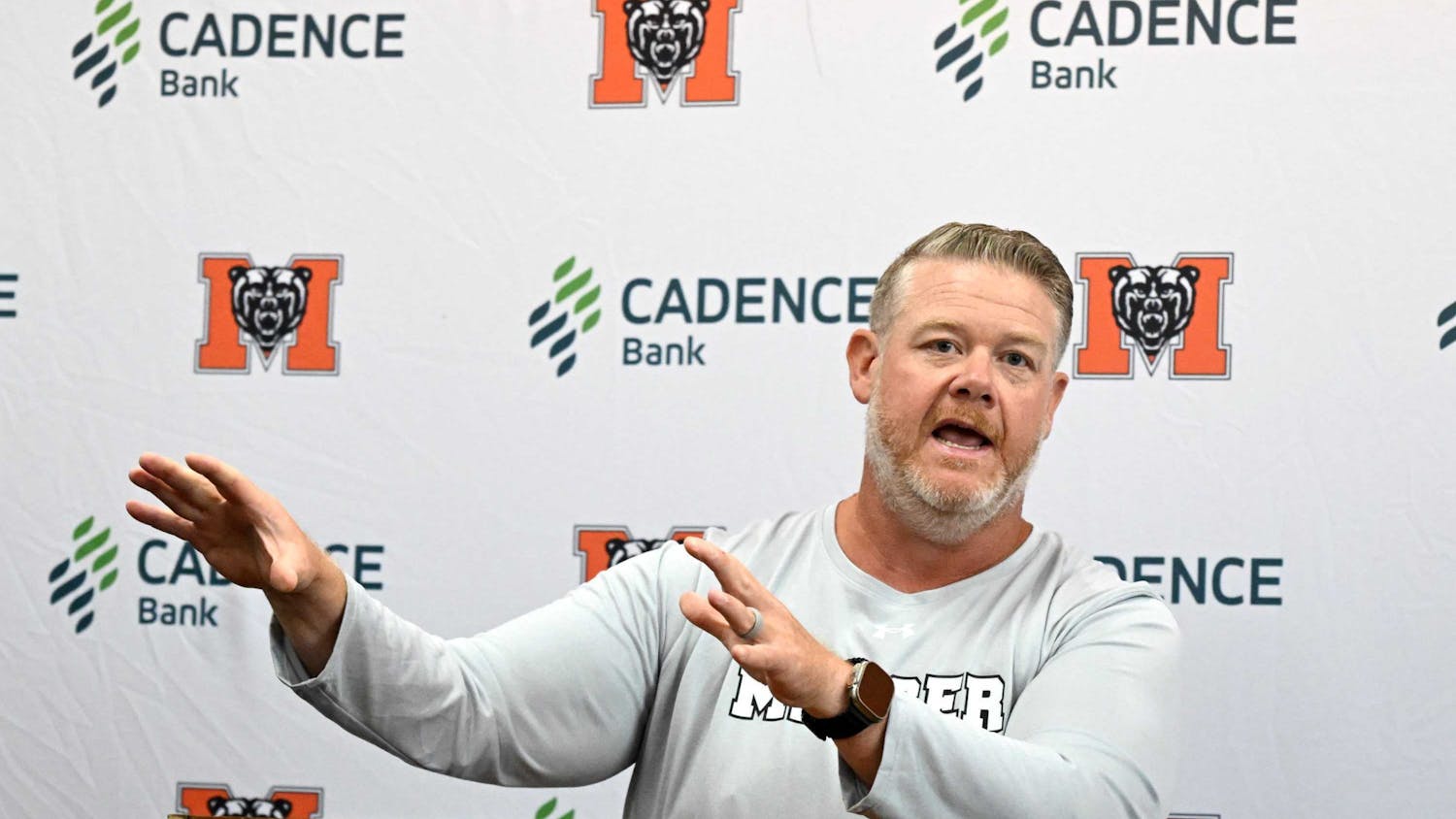In its third season, the Mercer football team competes against bigger, stronger teams in the Southern Conference. The strength and size of the Bears’ new competition has lead to a noticeable uptick in injuries this season. The increase in injuries calls into question what’s happening behind the scenes to help ailing players.
Amos Mansfield, the Director of Mercer Sports Medicine, says that the evolution of athletic training in his lifetime has been drastic.
“Twenty years ago [the world the sports medicine] didn’t have foam rolling, stem [cell] therapy, or heating,” Mansfield said. “Basically you came in the athletic training room if something was broken or you needed surgery. Now we do what we call performance treatments—making athletes feel good for practices and games.”
Athletes will spend up to an hour in the training room prior to a practice or lifting session simply to ensure that they can make it through another tough workout without sustaining an injury. Overtraining can cause athletes to plateau once their body’s capacity to recover is taxed too heavily. In football, however, there is always a push to make athletes bigger, stronger, and faster. Over-training to reach these goals is not uncommon, especially among Division I schools.
“Sometimes because [sports medicine] techniques and knowledge have gotten so much better, there’s a tendency to over-train. An example of this is the cold tank—we have athletes cold tank so that their legs will be fresh and they can practice for an extra three hours the next day. But there’s nothing better than rest and recovery.”
[pullquote speaker="Amos Mansfield" photo="" align="right" background="on" border="all" shadow="on"]My job here is to take care of the student-athletes and protect the liability of the institution, but my number one job is to minimize time loss.[/pullquote]
One of Mercer football’s star running backs, Alex Lakes, was out for two weeks with a collapsed lung and a few cracked ribs after taking a big hit. During those two weeks, Lakes was encouraged to rest his body as much as possible, but continued to do low-intensity workouts. He followed that advice, but even after returning to the game, Lakes was somewhat tentative to jump into action again.
“In my first game back I was nervous for that first hit. I’m still kind of nervous because I'm not 100% yet. It’s a mental thing too. My injury probably won't heal until the season ends because I will be getting hit every week.”
This repeated trauma could certainly pose a threat to the remainder of Lakes’ season, but he is also grateful to the sports medicine staff for getting him back on the field again so quickly. In getting Lakes back out on the field, Mansfield and his athletic training staff accomplished their primary goal: minimizing time loss.
“My job here is to take care of the student-athletes and protect the liability of the institution, but my number one job is to minimize time loss,” says Mansfield. “And how we minimize time loss is by being aggressive in our diagnosis. So, if myself or one of my athletic trainers sees an injured athlete and we feel that it warrants a physician’s care, we’re going to expedite that service so we can start rehab and treatment.”
Once a student-athlete has received a diagnosis, the trainers work with the strength and conditioning staff to draft a lifting and rehabilitation plan. This plan can include stem [cell] therapy, heating, icing, mobility training and a wide variety of other exercises.
“We continue to have the student-athlete work the entire body after an injury,” explains Mansfield. “Especially with football, if you hurt your knee you’re still lifting weights and exercising, because we want to keep you as fit as possible. That way when the athlete is cleared, they quickly make the transition to full participation. In this way we are very aggressive with our rehab.”
Mansfield goes on to say that this season—the team’s second in the Southern Conference—has produced many similar injuries.
“We’ve had more injuries this year, but the majority have been week-to-week and day-to-day type injuries versus season ending injuries,” says Mansfield. “We’ve minimized a lot of the soft tissue injuries like hamstrings, quads, and muscle injuries, and in talking with our conference partners, we’re all pretty much in-line. Now that we’ve made the move from non-scholarship football to scholarship football, we’re on a faster, stronger playing field so there are going to be injuries.”
One of these such injuries happened to Wilson Heres, a 5th year senior and offensive lineman for the Bears.
“I fractured my fifth metatarsal on a quarterback sneak against Wofford,” explains Heres. “I already had a stress fracture, and the bone finally broke when I pushed off of my left foot.”
[pullquote speaker="Amos Mansfield" photo="" align="left" background="on" border="all" shadow="on"]People are counting on you to perform so you’ve got to show up and be accounted for.[/pullquote]
After receiving his diagnosis, Heres was immediately put on a rehab program that took about an hour every day, and continues to weight lift to keep his strength up. Although he was already rehabbing his foot prior to the fracture, there was only so much he could do to prevent the injury.
“Football is a physical game and injuries are going to happen,” says Mansfield. “What we try to do every day is keep our athletes strong and mobile. The biggest thing that we can do as athletic trainers is have our athletes come talk to us if they have a problem. Let’s not turn something small into something big. Let us get it evaluated, let us make a diagnosis if need be, let us form a plan so that we can minimize time loss.”
Although injuries sustained in college football can have a lasting impact on these players’ lives, the lessons they learn in college athletics prove to be even more enduring.
“That’s what’s so great about college athletics,” says Mansfield. “Athletes learn how to be responsible; people are counting on you to perform so you’ve got to show up and be accounted for, and you’ve got to work hard when you’re tired and hurting.”
Mercer Medicine dealing with string of football injuries

Mercer's Sports Medicine Clinic features physical therapy and rehabilitation equipment as well as on-site X-ray, ultrasound and laboratory services.




